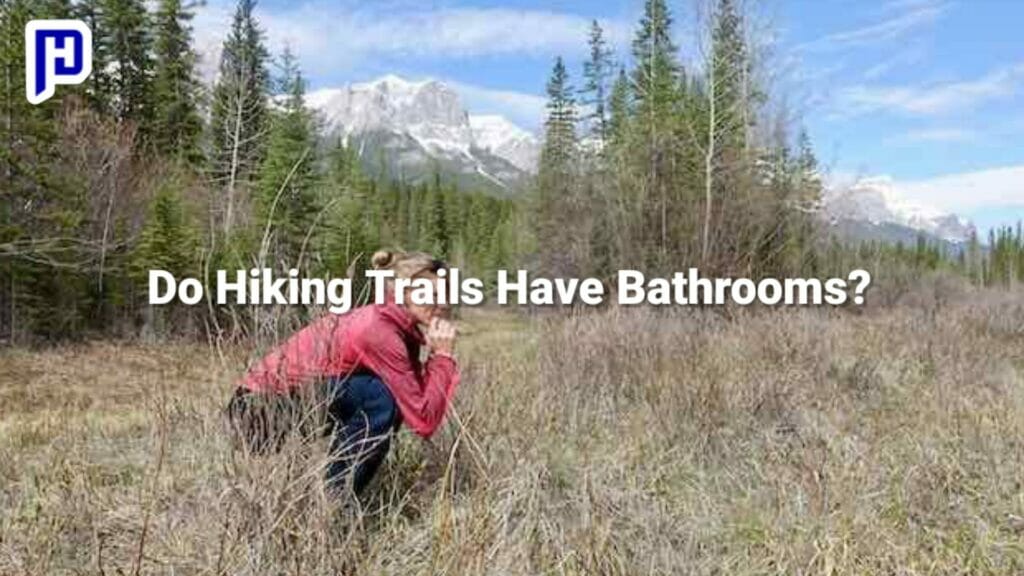Do Hiking Trails Have Bathrooms : A Serious Question
This is indeed an essential and commonly asked question among hikers, especially beginners. The availability of bathrooms along hiking trails significantly impact one’s outdoor experience.
For hikers, knowing presence of bathroom facilities provide a sense of comfort and assurance, making the outdoors more accessible and less intimidating.

It is a crucial factor when planning the duration of a hike, as it helps hikers gauge when and where they can take necessary breaks.
The presence or absence of bathrooms on hiking trails hinges on various factors, including the trail’s location, oversight authority, and the level of human activity. While regulated trails typically offer bathroom facilities, more remote and less-traveled paths may lack such conveniences.
Therefore, while the presence of bathrooms on hiking trails is valuable amenity but hikers should always be equipped with the knowledge and supplies to handle bathroom needs responsibly when nature calls off the beaten path.
Do Hiking Trails Have Bathrooms?
The availability of bathrooms along hiking trails indeed depends on the type of trail and the level of authority overseeing it. Hiking experiences range from well-established and heavily trafficked trails to remote, off-the-grid paths where facilities are scarce.
In many cases, hiking trails that fall under the jurisdiction of national parks, state parks, or other governing bodies typically do have bathroom facilities in place. These organizations prioritize visitor comfort and environmental conservation.
Trails in remote wilderness areas or those far from the reach of socialization often lack formal bathrooms due to the intent of preserving the natural environment in as pristine a state as possible.
Therefore, it’s safe to assume that if you’re hiking in a regulated area, there will be bathroom options along the trail. These facilities can vary from basic pit toilets to more modern flush toilets, depending on the park’s infrastructure.
In such situations, hikers must be prepared for nature’s call without the convenience of designated facilities. This involves adhering to Leave No Trace principles, which emphasize responsible waste disposal.
Hikers should carry essential supplies like biodegradable toilet paper and a trowel for digging cat holes to bury human waste properly. Being self-sufficient and knowledgeable about these practices is crucial when venturing into the wilderness.
What I Mainly Do?
When I find myself on hiking trails without a restroom facility, which is quite common when exploring more remote or less developed areas, I’ve learned to adapt to a few essential practices.
Before hitting the trail, I make sure to use the restroom at the trailhead or a nearby facility if available. This minimizes the need for bathroom breaks during the hike.
If nature calls along the trail and no facilities are in sight, I follow the “Leave No Trace” principles diligently. I look for an inconspicuous spot away from the trail, water sources, and campsites.
Then, I use a small trowel to dig a “cat hole” at least 200 feet away from any water source. Afterward, I do my business in the hole and cover it up with soil. This ensures proper waste disposal while minimizing environmental impact.
Carrying essentials like biodegradable toilet paper in a sealable plastic bag is crucial. Afterward, I pack out used toilet paper to keep the trail pristine.
Ultimately, hiking in areas without bathroom facilities requires responsible practices and a commitment to preserving the natural environment. By planning and following Leave No Trace guidelines, I enjoy the beauty of remote trails while respecting the delicate ecosystems they traverse.
Tips For Hikers
Bringing tissue paper or biodegradable toilet paper along with you on trails is a smart and responsible practice. It’s a crucial item in your hiking kit, especially when you’re hiking in areas without restroom facilities. Here’s why it’s essential:
Hygiene
Tissue paper helps you maintain proper hygiene when nature calls. It allows you to clean yourself after using the restroom, ensuring you stay comfortable and clean during your hike.
Environmental problem
Opt for biodegradable toilet paper when possible. This type of tissue paper breaks down more easily in natural environments, reducing its impact on the ecosystem.
Leave No Trace
Bringing tissue paper aligns with Leave No Trace principles, which emphasize responsible outdoor ethics. It ensures you don’t leave behind waste or litter on the trail.
Convenience
Carrying tissue paper offers convenience. It’s a small, lightweight item that can be easily packed in your backpack, ready for use when needed.
Why Bathrooms are Not Installed On Hiking Trail?
It is not always guaranteed that you’ll find a restroom on any hiking trail. Being prepared for this eventuality is a fundamental aspect of responsible hiking. Here’s why:
Remote Locations
Many hiking trails traverse remote and pristine natural areas. These places are intentionally left undeveloped to preserve their natural beauty. As a result, restroom facilities are often absent to minimize human impact.
Limited Resource
In some cases, the cost and logistical challenges of installing and maintaining restroom facilities in remote areas can be prohibitive. This makes it impractical to provide them along every trail.


